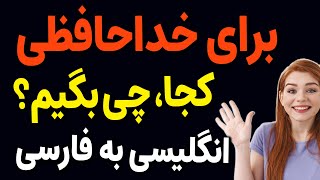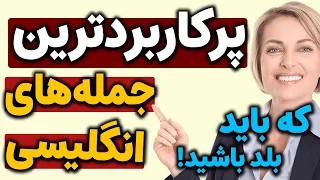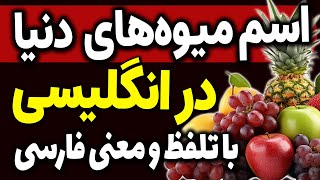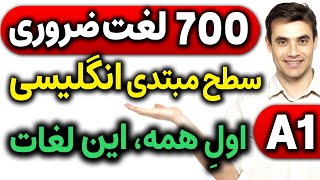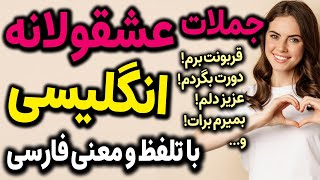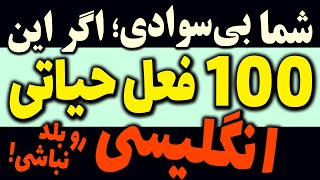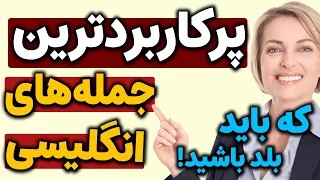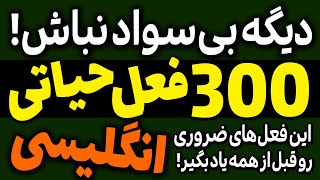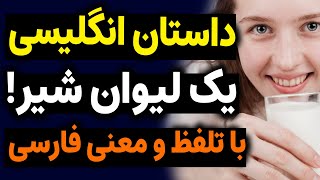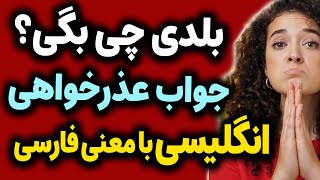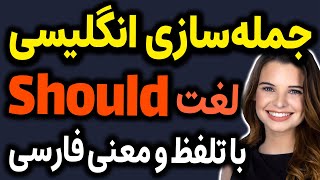نكته هاي گرامري زبان انگليسي افعال مدال
can - could / had to /have to – has to
Can
اين فعل کمکي توانايي در زمان حال را بيان مي کند و بعد از اين فعل کمکي از شکل ساده فعل استفاده مي شود و فعلي که بعد از can قرار مي گيرد نبايد ing – ed – es – s داشته باشد.
1- Can john ……. Here by lunch time
a) got
b) get *
c) gets
d) getting
2- The children ………. Read this book now. They don’t read it before.
a) could
b) has to
c) can *
d) had to
اگر توجه داشته باشيم قيد زمان ما now است بنابراين گزينه c درست است و دليل ديگر اينکه children جمع است و با گزينه has to قرار نمي گيرد.
3- The student can ……..the question very easily.
a) answers
b) to answer
c) answered
d) answer *
4- We ……..talk about that later.
a) could
b) can*
c) had to
d) has to
در اينجا بعد از can شکل ساده فعل را داريم و has to چون براي مفرد است، به کار نمي رود چون we جمع مي باشد.
could
1- توانايي کار در زمان گذشته را بيان مي کند.
2- بعد از آن شکل ساده فعل قرار مي گيرد.
3- could گذشته canمي باشد.
a) 1- I can swim well. But I ……..swim very well before.
cannot
b) shouldn’t
c) couldn’t *
d) mustn’t
تنها گزينه اي که به گذشته اشاره دارد couldn’t است و گزينه c درست است.
2- All the students could ……..the questions easily yesterday.
a) answers
b) answer *
c) to answer
d) answering
چون بعد از could فعل بصورت ساده قرار مي گيرد.
3- Could you …….. English 4 years ago.
a) wrote
b) to write
c) writing
d) write *
Could فعل کمکي زمان گذشته است و ago هم زمان گذشته را نشان مي دهد و بعد از could بايد فعل به صورت ساده بيايد.
4- He couldn’t ……..how jet engines work. a) explains
b) explain *
c) to explain
d) explaining
چون could زمان گذشته است و بعد از آن فعل به صورت ساده بيان مي شود.
have to – has to
1- اجبار در زمان حال را بيان مي کند.
2- بعد از آن فعل به صورت ساده بيان مي شود
1- I have to ……… an appointment with the dentist.
a) makes
b) make *
c) to make
d) making
بعد از has to و have to فعل بايد به شکل ساده بيايد.
2- Does she ……… speak French in her job?
a) has to
b) had to
c) have to *
d) can
ابتدا ذکر مي کنيم گزينه a درست است اما بايد دقت کنيم که وقتي که has to و have to با فعل کمکي سؤال مي شود، فعلهاي کمکي اين دو فعل do،does هستند و يادمان باشد وقتي has to با فعل کمکي does سئوالي شود، فعل تبديل به have to مي شود.
3- She has to ……… her lesson carefully.
a) study *
b) studied
c) to study
d) studying
4- Does john ……..help his mother at home?
a) have to *
b) has to
c) had to
d) can
چون جمله با فعل does سؤالي شده has to تبديل مي شود.
had to مجبور بودن
1- had to اجبار در زمان گذشته را بيان مي کند.
2- گذشته have to و has to، had to مي باشد.
3- بعد از had to بايد شکل ساده فعل قرار بگيرد.
1- They didn’t know the address. They ……… ask a policeman.
a) have to
b) can
c) had to *
d) can
چون اتفاق در زمان گذشته است از فعل کمکي had to استفاده مي کنيم.
2- Reza was late for class. He ……..see the teacher.
a) has to
b) can
c) should
d) had to *
چون was گذشته است بنابراين had to صحيح مي باشد.
3- The old man was sick. He had to ……….The doctor.
a) saw
b) see *
c) sees
d) seen
چون was گذشته است و در جلسه had to داريم بنابراين بايد شکل ساده فعل قرار بگيرد.
4- I had to ……… for her three hours yesterday.
a) wait *
b) waiting
c) waited
d) waits
جملات پرکاربرد انگلیسی برای خداحافظی کردن در مکالمه روزمره انگلیسی
عبارت ها و اصطلاحات، هنگام خداحافظی در انگلیسی ✋✋ در این ویدیو جملات پرکاربرد انگلیسی برای خداحافظی کردن در مکالمه روزمره انگلیسی را خدمت شما بیان کرده ایم. جملات خاص و باکلاس و مخصوص انگلی...
پرکاربردترین جملات انگلیسی با معنی فارسی که باید بلد باشید
پرکاربردترین جملات مهم انگلیسی با معنی فارسی و تلفظ که باید بلد باشید در این ویدیو مهمترین و کاربردی ترین جملات انگلیسی روزمره که برای هر زبان آموز ...
مکالمه انگلیسی در فرودگاه - جملات ضروری انگلیسی در پرواز و سفرهای هوایی با معنی فارسی و تلفظ
مکالمه انگلیسی در فرودگاه - جملات ضروری انگلیسی در پرواز و سفرهای هوایی با معنی فارسی و تلفظ در این ویدیو، ما با تمرکز بر روی مکالمات روزمره...
اسم میوه ها در انگلیسی با معنی فارسی و تلفظ
اسم انواع میوه ها در انگلیسی با معنی فارسی و تلفظ فارسی Fruits in English یادگیری اسامی میوه ها به انگلیسی جزو لغات بس...
یادگیری زبان انگلیسی با 250 فعل ضروری انگلیسی و جملات کاربردی انگلیسی مثال
یادگیری زبان انگلیسی با 250 فعل ضروری انگلیسی و جملات کاربردی انگلیسی مثال در این درس لیست 250 افعال اساسی انگلیسی توسط تیم انگلیسی مثل آب خ...
بهترین روش یادگیری زبان و بهترین روش یادگیری ماندگار لغت های انگلیسی به فارسی
بهترین روش یادگیری زبان و لغت های انگلیسی به فارسی یکی از بهترین روش های یادگیری لغت های انگلیسی همین روش است.یادگیری واژگان یکی از بخشهای حیات...
دریافت درآمد یوتوب کاملا" شفاف و قانونی، برای اولین بار در ایران
دریافت درآمد یوتوب بصورت کاملا" شفاف و قانونی، برای اولین بار در ایران با توجه به رشد تولید کنندگان محتوا و کانال های یوتوب در ایران، یک ر...
یادگیری آسان 700 کلمه بسیار پرتکرار در زبان انگلیسی با تلفظ و معنی فارسی همراه با دانلود Pdf رایگان
یادگیری آسان 700 کلمه بسیار پرتکرار در زبان انگلیسی با تلفظ و معنی فارسی همراه با لیست لغات و دانلود Pdf رایگان ...
سوالات مهم انگلیسی روزمره با جواب - (100 پرسش با جواب) سوال و جواب یا مصاحبه انگلیسی با معنی فارسی
سوالات مهم انگلیسی روزمره با جواب - (100 پرسش با جواب) سوال و جواب یا مصاحبه انگلیسی با معنی فارسی در این درس مهمترین و اسا...
مرور و یادگیری انگلیسی در خواب قسمت هفت - یادگیری جملات مهم انگلیسی قبل از خواب | درس 7
مرور و یادگیری انگلیسی در خواب قسمت هفت - یادگیری جملات مهم انگلیسی قبل از خواب | درس 7 مرور و یادگیری انگلیسی در خواب قسمت هفت - در این سری از درسهای...
مهمترین فعل های انگلیسی یا افعال اساسی انگلیسی با معنی فارسی و جملات کاربردی مثال
مهمترین فعل های انگلیسی یا افعال اساسی انگلیسی با معنی فارسی و جملات کاربردی مثال در این ویدیو یکصد مورد 100 فعل ضروری از مهمترین و اساسی ترین افعال ا...
اعضای خانواده و فامیل در انگلیسی با معنی فارسی و تلفظ
اعضای خانواده و فامیل در انگلیسی با معنی فارسی و تلفظ در این پست و در سایت انگلیسی مثل آب خوردن به صورت کامل به معرفی تمامی لغات ضروری اعضای خانواده و...
فرق بین و کاربرد job, work, career, employment در انگلیسی
فرق بین و کاربرد job, work, career, employment در انگلیسی بسیاری از ...
قربون صدقه رفتن در انگلیسی و عبارت های عشقولانه و محبت آمیز در انگلیسی 2
قربون صدقه رفتن در انگلیسی و عبارت های عشقولانه و محبت آمیز در انگلیسی 2 هر زبانی مجموعه ای از نام های مستعار شیرین یا عاش...
یادگیری انگلیسی با داستان الاغ کشاورز متن انگلیسی با ترجمه فارسی
یادگیری انگلیسی با داستان الاغ کشاورز با متن انگلیسی و ترجمه فارسی در این ویدیو داستان انگلیسی آموزنده و جالب الاغ کشاورز یا به انگلیسی The Farmer's...
صفت های پرکاربرد زبان انگلیسی برای توصیف افراد اشیا موقعیت ها وضعیت ها
صفت های پرکاربرد زبان انگلیسی برای توصیف افراد اشیا موقعیت ها وضعیت ها از صفر تا صد در این درس و در این ویدیو مهمترین و ضروری تر...
یکصد 100 فعل حیاتی و ضروری انگلیسی با معنی و تلفظ درست با مثال کاربردی
فعلهای اساسی انگلیسی به فارسی (صد 100 مورد) با مثال و ترجمه به فارسی لیست فعلهای مهم و پرتکرار که در این ویدیو یکجا جمع شده اند، به شدت د...
پرکاربردترین جملات انگلیسی با معنی فارسی که باید بلد باشید
پرکاربردترین جملات انگلیسی با معنی فارسی که باید بلد باشید در این ویدیو مهمترین و کاربردی ترین جملات انگلیسی روزمره که برای هر زبان آموز در مسیر یادگی...
سیصد 300 فعل حیاتی و مهم انگلیسی با تلفظ و معنی فارسی
سیصد 300 فعل حیاتی و مهم انگلیسی با تلفظ و معنی فارسی در سایت انگلیسی مثل آب خوردن Easy Peasy English فعلهای اساسی انگلیسی به فارسی (سیصد 300 مورد) با...
داستان انگلیسی یک لیوان شیر با متن انگلیسی و ترجمه فارسی و تلفظ صوتی
داستان انگلیسی یک لیوان شیر با متن انگلیسی و ترجمه فارسی و تلفظ صوتی ...
جملات ضروری انگلیسی با ترجمه فارسی برای جواب عذرخواهی با روش انگلیسی مثل آب خوردن
جملات ضروری انگلیسی با ترجمه فارسی برای جواب عذرخواهی با روش انگلیسی مثل آب خوردن در زندگی روزمره انگلیسی موقعیتهای بسیاری پیش میاد که باید ...
جملات و اصطلاحات کوتاه انگلیسی روزمره با معنی فارسی و تلفظ انگلیسی مثل آب خوردن
جملات کوتاه انگلیسی روزمره با معنی فارسی و تلفظ در این درس مهم، 150 مورد از جملات کوتاه انگلیسی با معنی فارسی که مهمترین جملات کوتاه انگلی...
جمله سازی انگلیسی با لغت اساسی Should در انگلیسی به فارسی و جملات ضروری روزمره مثال
جمله سازی انگلیسی با لغت اساسی Should در انگلیسی به فارسی و جملات ضروری روزمره مثال در این درس جمله سازی انگلیسی و جملات ضروری و کاربردی با لغت اساسی ...
یادگیری مکالمه انگلیسی در 20 روز با درسهای رایگان آموزش زبان انگلیسی به فارسی
یادگیری مکالمه انگلیسی در 20 روز با درسهای رایگان آموزش زبان انگلیسی به فارسی در سری درسهای آموزش مکالمه انگلیسی در 20 روز، در انگلیسی مثل آب خوردن؛ د...

